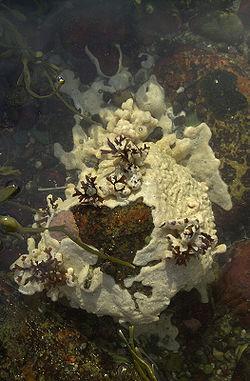Unalaska at risk for harmful invasive species

Friday, April 09 2010
Unalaska, AK – Unalaska is at risk for a number of invasive marine species that could have negative impacts on the fishing industry if they aren't prevented. Denny Lassy is the Alaska coordinator for invasive species for the U.S. Fish & Wildlife Service. He says Unalaska is particularly susceptible to invasives because of the number of vessels from around the world that come through the area.
"If it's not natural, it's brought in by humans, and it causes some sort of harm, that's what folks refer to as invasive species. And a lot of them get moved around on things like ships and in containers and on aircraft and that sort of thing. And because Unalaska, and all of Alaska really, is such a hub for transportation, that puts Alaska and particularly places like Unalaska at great risk."
Ships carry new species from port to port through their ballast water and on their hulls. Many ships exchange their ballast water while at sea, which reduces like the likelihood that the ships will bring in new organisms that can survive in coastal waters but does not eliminate it.
"Even if you only have 5 or 10 percent of the organisms left being pumped out, 5 or 10 percent of many billions of organisms is still a lot that could potentially invade the new waters at your port, where the water is being dumped," Lassy said.
However he said at the moment that's the best way to deal with ballast water. Some vessels are also trying experimental methods, like treating water with UV lights or taking it to ballast water treatment stations if they are available.
Another threat comes from species that grow on the hulls of vessels that are then knocked off at new ports. This can be prevented by cleaning the hulls, though that can be a costly and time consuming procedure. Lassy said that oil rigs in particular pose this type of threat.
"Oil rigs are just notoriously fouled with all kinds of organisms. That isn't necessarily problematic if the rig is coming from a place in, say, really warm waters where all the organisms that are on it are not going to survive in Alaska, but if we're talking about trying to develop offshore oil and gas development in Alaska and the rigs are going to come from other cold water settings, then we need to be cognizant of the risk that organisms on those rigs - unless they have been cleaned - are potential risks to Alaska waters."
Lassy said that people in Alaska, including Unalaska, need to be particularly worried about two types of marine invasives - tunicates and European green crabs. Tunicates are like slimy sponges that can spread quickly. They cover the sea floor and prevent crabs, groundfish, and other species from access the worms and food sources that live in the ocean bottom.
"So if you've carpeted the bottom with something that's not very good food itself and it covers the good food source, then you're talking about causing some real disruptions of the marine environment," he said.
European green crabs, which first invaded San Francisco Bay but have moved northward to Vancouver Island, eat oysters and muscles and compete with juvenile crabs from commercially important species for valuable food sources.
Lassy said the best way to deal with the problem is to prevent the invasive species from coming and to detect the species early if they do get into the ports.
"The more invasion that we can prevent, the more harm and damage that we can prevent and a lot of cost savings that we can realize. So it's important to realize that we don't have to have a silver bullet that will stop everything from coming in. It's more important to focus on reducing as much of the risk as you can. Don't waste the opportunity to prevent something from coming in if you have the opportunity."



